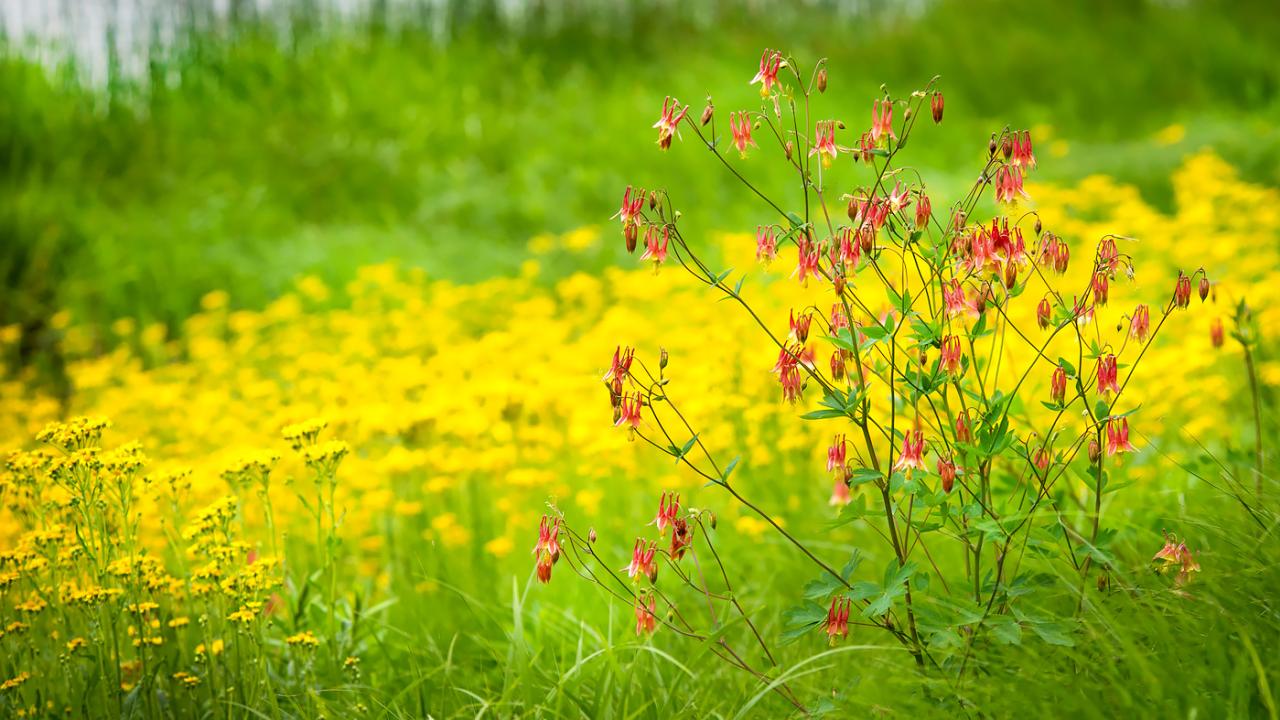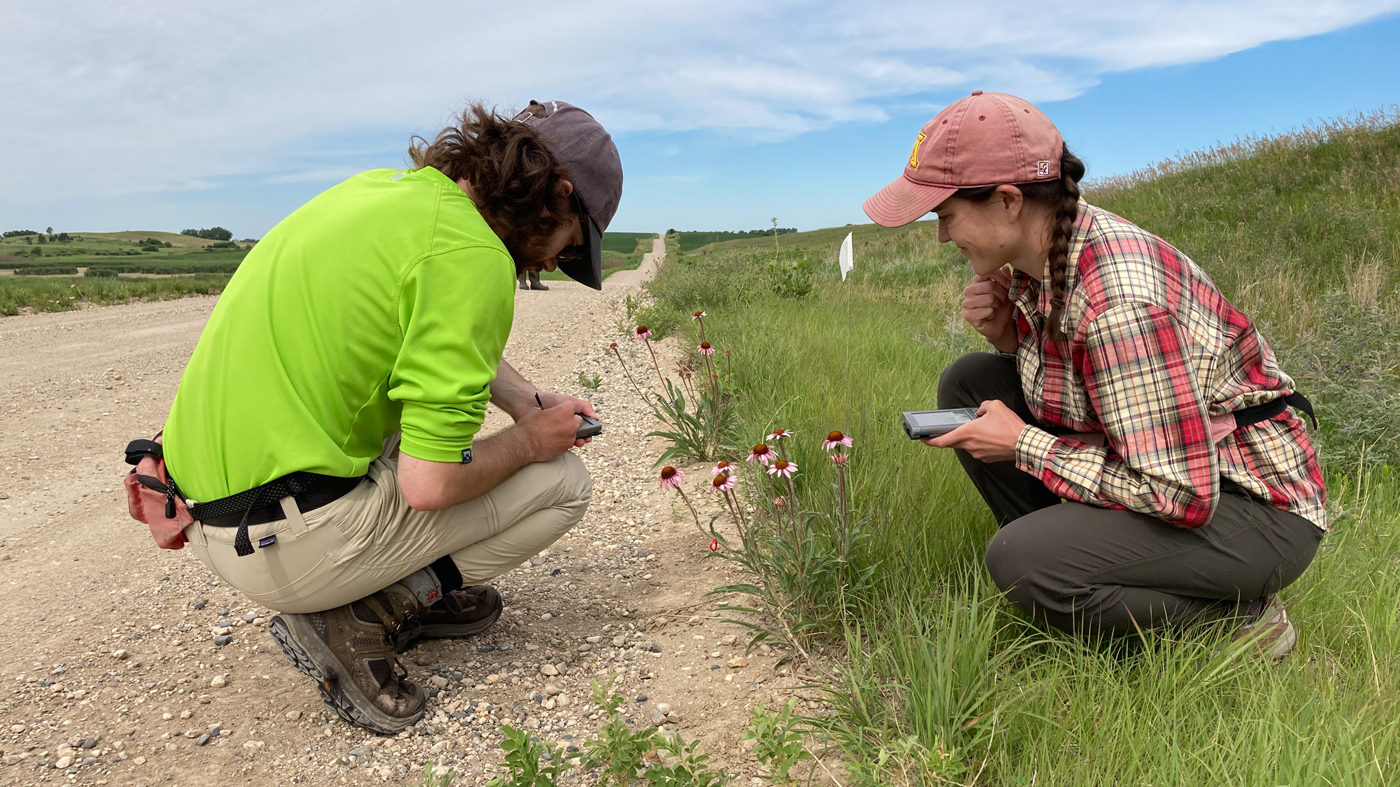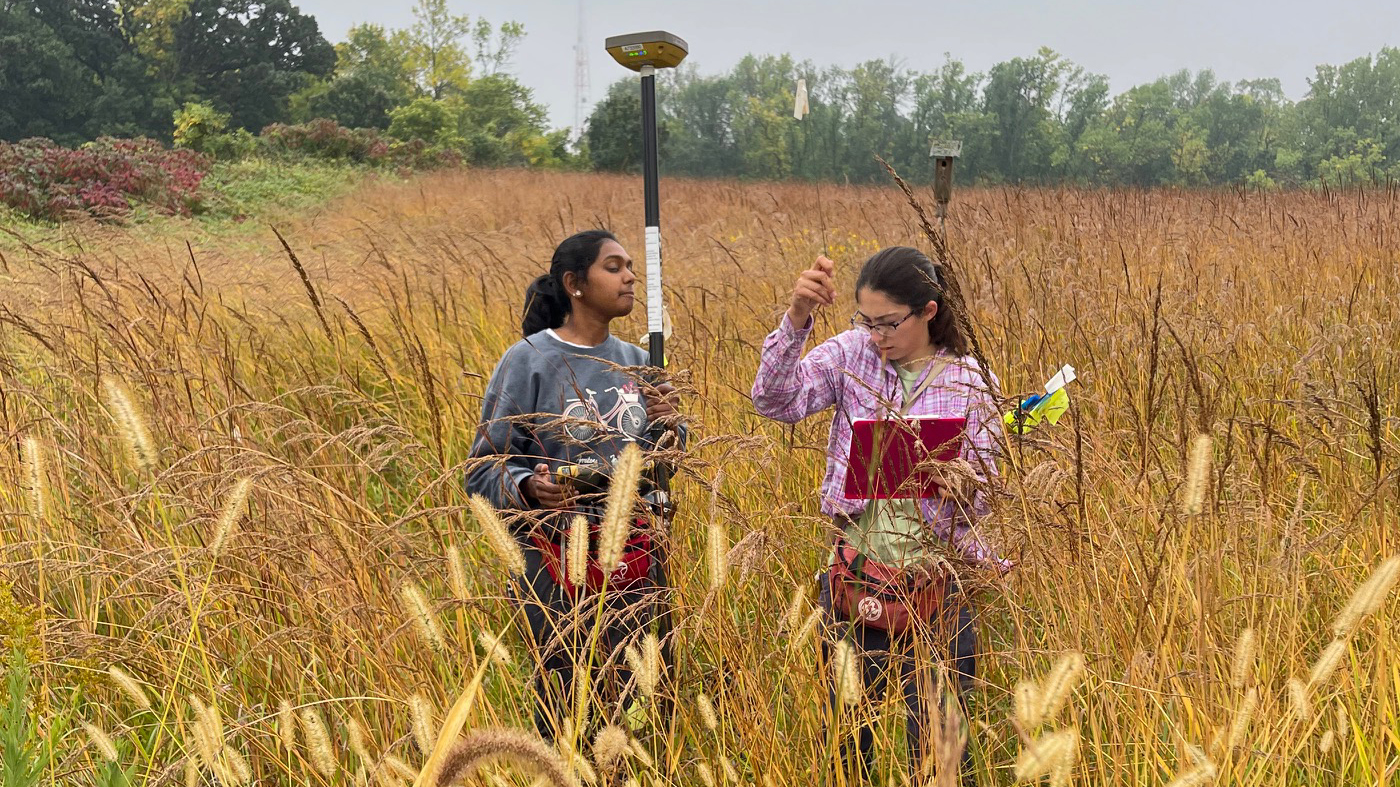

Plant Science &
Conservation
Garden Stories
Burning the Garden
Fragmented Landscapes Need Fire to Thrive
The Chicago Botanic Garden sets one-quarter of its land on fire every year.
These prescribed burns—planned fires set by trained staff during favorable weather conditions—are conducted each spring and fall in the Dixon Prairie, McDonald Woods, and other natural areas.
Garden ecologists and Stewardship and Ecology of Natural Areas (SENA) program interns conduct a prescribed burn in Dixon Prairie.
Fire burns through dead leaves and stems, opening space for native plants to grow from seed, nourished by the charred plant material and increased sunlight. The cleared, black ground warms up earlier in spring, which gives established native plants a head start and makes it easier to spot and remove invasive species.
“Many people see fire only as a destructive force,” said Matt Evans, woodlands ecologist at the Garden. “But on a landscape like ours where fires were natural and many species require fire to survive, burning regularly is critical to the health of our natural areas.”
That’s because periodic fires—ignited by lightning and set by Indigenous Peoples for hunting, managing resources, and more—shaped the Chicago area’s woodlands, wetlands, and prairies over thousands of years.
The fires disappeared as the US government and settlers violently removed the Indigenous Peoples stewarding the land. The expansion of permanent settlements and agriculture led to fire suppression, leaving remaining natural areas disconnected from each other and the processes that keep them healthy.

“With our fragmented landscapes in Illinois, burning the Garden’s natural areas gives them the best chance to thrive with so much working against them,” said Jim Jabcon, prairie ecologist at the Garden.
Fire is an effective tool for keeping natural areas healthy because, over time, the cycle of burning, spreading native seeds, and removing invasive species favors fire-adapted native plants and limits the growth and spread of invasive species that didn’t evolve with fire.
“McDonald Woods—our restored oak woodland—is so rich in native wildflower, grass, and sedge species because burning leaf litter and reducing invasive species through prescribed fire helps the seeds we spread take root and thrive,” said Evans. “It only became this way because of fires over time.”
Burning questions?
How do you know when to burn? What about wildlife? How is smoke managed? Learn all about prescribed burning on the Forest Preserves of Cook County’s Prescribed Burning webpage.
Understanding fire through coneflowers
For nearly 30 years, Stuart Wagenius, Ph.D., conservation scientist at the Negaunee Institute for Plant Conservation Science and Action at the Garden, has spent the summer in rural western Minnesota visiting thousands of individual narrow-leaved purple coneflowers (Echinacea angustifolia) spread over 25 square miles.
That dedication has helped The Echinacea Project uncover valuable lessons for land managers using fire in fragmented prairies.
“We recently burned a small prairie remnant with only five purple coneflower plants—and it seems silly to burn something of that size,” said Dr. Wagenius. “But with so much fragmentation of our remaining natural areas, it’s really important if we want to understand how the size of an area impacts these plant communities.”
A study published in September showed that summer flowering increased in narrow-leaved purple coneflower in all prairie remnants the summer after a spring burn, but pollination and seed production increased most in smaller populations of plants.
“Land managers want to burn, but if they have limited resources, they burn the biggest and best areas,” said Wagenius. “So small and medium-sized remnants are not getting fire and are rapidly declining. Our work shows that it’s worthwhile to burn smaller remnants, you get a big bang for your buck.”
The Echinacea Project team—which includes scientists, students, teachers, and volunteers—is now looking at how fire influences the entire lifecycle of narrow-leaved purple coneflower and the native ground-nesting bees that pollinate them. Each new insight gives land managers a better understanding of how to use fire to keep these remaining wild places healthy—in Minnesota, Chicago, and beyond.
“In the Chicago area, there are so many cool habitats—savannas, oak woodlands, dunes, dolomite prairies—and a lot of those habitats are special because they burned regularly. The Native Americans here burned regularly,” said Wagenius. “These places are threatened and one of the ways to help with many of those threats is fire. Fire is a really good thing on the Chicago landscape—good for plants, good for pollinators, good for people.”
The Echinacea Project has been funded by the National Science Foundation since 2000. Funding for the native bee study is provided by the Minnesota Environment and Natural Resources Trust Fund as recommended by the Legislative-Citizen Commission on Minnesota Resources (LCCMR).





